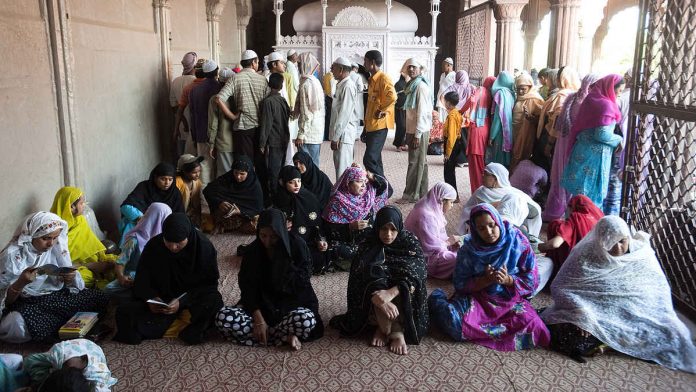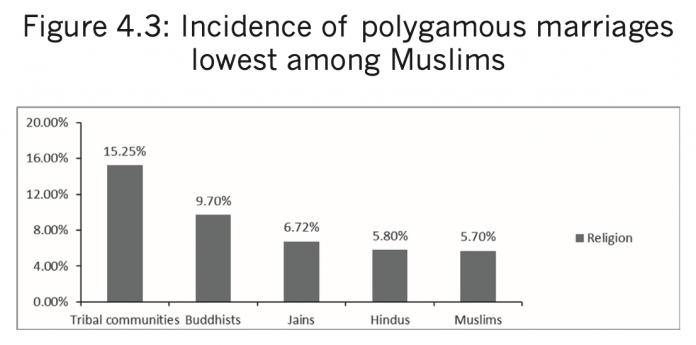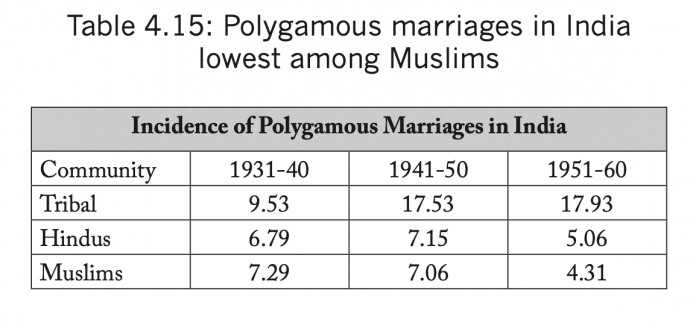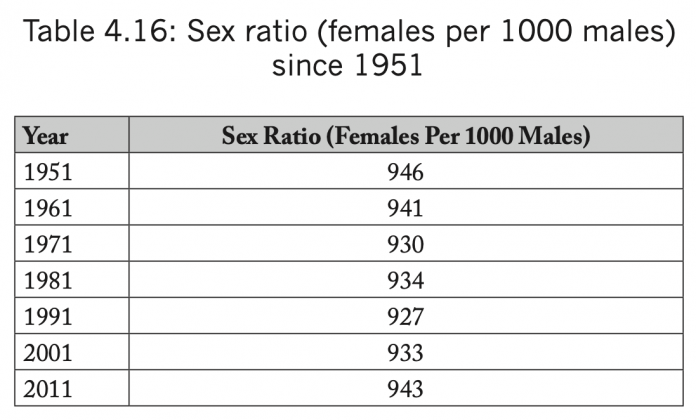
MUSLIMS POORER, LESS EDUCATED THAN HINDUS. BUT THEIR KIDS MORE LIKELY TO SUVIVE TILL AGE 5
Polygamy is the practice of having more than one spouse at the same time. This practice is outlawed in India, except for Muslims and some tribal communities, as their customary laws permit it. At the very top of the misinformation campaign is the propaganda that Muslims have multiple wives to have more children. Muslims in the country are subject to the terms of the Muslim Personal Law (Shariat) Application Act of 1937 which is interpreted by the All India Muslim Personal Law Board. But in a judgement of February 2015, the Supreme Court of India stated that ‘Polygamy was not an integral or fundamental part of the Muslim religion and monogamy was a reform within the power of the state under article 25.’ This meant that although their personal law permits Muslim men to have as many as four wives, the Supreme Court has ruled that a Muslim’s fundamental right to profess Islam does not include the practice of polygamy.
At the very centre of the debate around polygamy lies the belief that Islam encourages polygamy, which eventually leads to population growth. The reality, however, is different. There is only one verse in the Quran (Surah An-Nisa [4:3]).
The only study on the subject of polygamy ever done was by the Committee on the Status of Women in India, 1974, which showed that polygamy as a practice was not just exclusive to Muslims but was prevalent among all communities of India. In fact, it was found that Muslims were the least polygamous among all the groups (Figure 4.3).

Trends through three decadal Censuses, from 1931 to 1960, confirm that polygamy cuts across all communities, is declining among all of them, and, most importantly, is least among the Muslims (Table 4.15). The Hindu Marriage Act of 1955 imposed a ban on polygamy for Hindus, Sikhs, Buddhists and Jains so it is quite possible that the numbers have changed in the years and generations hence. However, the Report of the Committee on the Status of Women in India, 1974, Ministry of Social Welfare was the last to look at polygamous marriages in India.

Incidence of Polygamous Marriages in India
There is an interesting dimension missed by everyone. Polygamy is not even possible in India, as the number of women has been significantly lower than the number of men throughout the seven decades under study, as shown in Table 4.16.

Statistically, therefore, no Indian man has even one full wife! Each has 0.9 of a wife. Experts, in any case, are of the opinion that polygamy cannot lead to a high birth rate as the number of polygamous men, however few, would result in an equal number of unmarried men (who will not find wives). Another Indian study shows that the average number of children from the second wife of Muslim men was only 1.78 as compared with 4.67 from the first wife. Thus, it is clear that the presumption of a high polygamy rate among Muslims is unfounded and that polygamy is not a factor leading to high birth rate among Muslims.
Infant mortality rate
There is one area in which Muslims fare better than all other religious communities. In India, Muslim children are more likely than their Hindu counterparts to survive to their fifth birthday, despite Muslim parents being poorer and less educated on average than Hindu parents. By age five, mortality among Muslims is about 18 per cent less than among Hindus.29 In their 2010 article titled ‘The Puzzle of Muslim Advantage in Child Survival in India’, Bhalotra et al. described this consistent pattern as the ‘puzzle of Muslim advantage in child survival in India’. It was demonstrated that no factor – education, wealth, family demographics, state trends, cohort effects, development expenditure, village-level health services and health infrastructure – could explain the Muslim mortality advantage that has existed since the 1960s. Health behaviours like breastfeeding, antenatal care or even place of delivery had very little role to play in explaining this disparity.
The only plausible explanation for the highest child sex ratio among Muslims could be the emphasis of Islam on gender equality. The sacred text of the glorious Quran bears witness to the fact that in Islam women are considered as vital to life as men. Men and women are equal and therefore have similar rights and duties, as given in the Quran and the Hadith:
‘Never will I waste the work of a worker among you, whether male or female, the one of you being from the other.’

